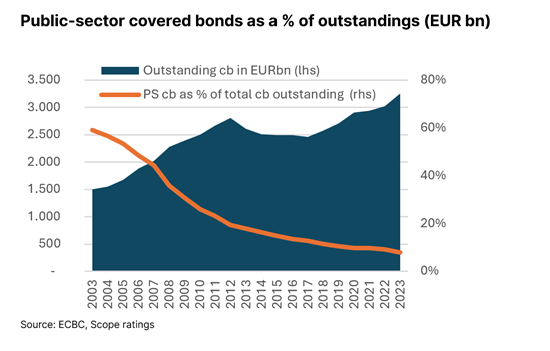Announcements
Drinks

Covered Bond Quarterly: Reviving publicly guaranteed collateral could boost European competitiveness
That contribution could be material, especially if alternative guaranteed public-sector collateral can be developed for classic European (Premium) covered bonds, or through the issuance of European Secured Notes.
How would Frederick the Great, the 18th century King of Prussia who introduced an instrument that developed into Germany’s Pfandbrief, the forerunner of all covered bonds, have reacted to the Draghi report?
“He might have pointed out that covered bonds can offer valuable funding support to three areas for action highlighted in the report: the innovation gap between Europe and the US/China; decarbonisation and competitiveness; and increasing security and reducing dependencies,” said Karlo Fuchs, head of covered bonds. The latter insofar as covered bonds provide financial stability as a European product mainly used by European issuers whose strength lies in their dual-recourse mechanism and strong governance support.
“The key challenge in targeting these three areas remains funding,” added Mathias Pleissner, deputy head of covered bonds. “In that respect, the existing toolkit of a European Covered Bond (Premium) is already fully equipped and ready to provide support – if the EU promotes necessary investments and accepts burden-sharing.”
Stable issuance
Covered bond issuance has been stable since our last Covered Bond Quarterly. “September lifted euro benchmark covered bond issuance to around EUR 141bn so our EUR 170bn forecast for the year is do-able even considering typically weaker Q4 activity,” Pleissner said, who pointed out that spread variance has narrowed this year compared to 2023, although average new issue spreads have increased to 42bp, compared to 27bp in 2023 and 11bp in 2022.
Outliers (i.e. issuing with spreads above 50bp) came mainly from Italy (37%) with smaller shares from Germany (12%) and Austria (11%). “Italian spreads reflect credit dispersion, which we forecast would return following the ECB’s retreat as the market’s principal investor. Issuance from Germany above 50bp came from CRE lenders. CRE uncertainties also drove up spreads for some Austrian issuers,” Pleissner said.
The residential property picture looks better. Since the beginning of the year, all but two EEA countries plus the UK have seen prices rise. On mortgage rates, the share of rate fixings at 10 or more years increased significantly in the ultra-low-rate environment between 2016 and 2022. In 2022, up to half of all households took out long-dated mortgages compared to only 25% in 2009. Adding fixed-rate periods of more than five years, the share rises to 75%.
Following the pandemic and after inflation had put pressure on rates and ultimately on borrowing costs, households started to move into floating-rate products hoping for a reversal later. “While this makes sense psychologically and economically, it is perplexing as to why European households have adopted opposing strategies to optimise borrowing costs,” Pleissner said. “In some cases, this is explained by who bears refinancing costs – banks or borrowers. But it is also about stickiness of household behaviour and market characteristics.”
Download the Covered Bond Quarterly here.
Stay up to date with Scope’s ratings and research by signing up to our newsletters across credit, ESG and funds. Click here to register.







